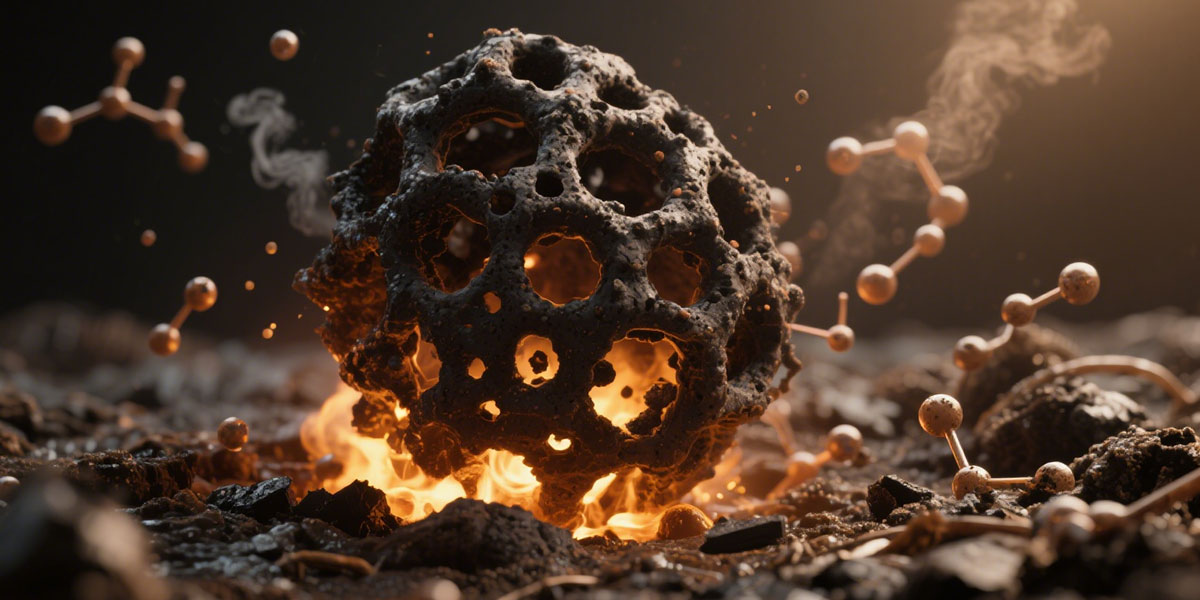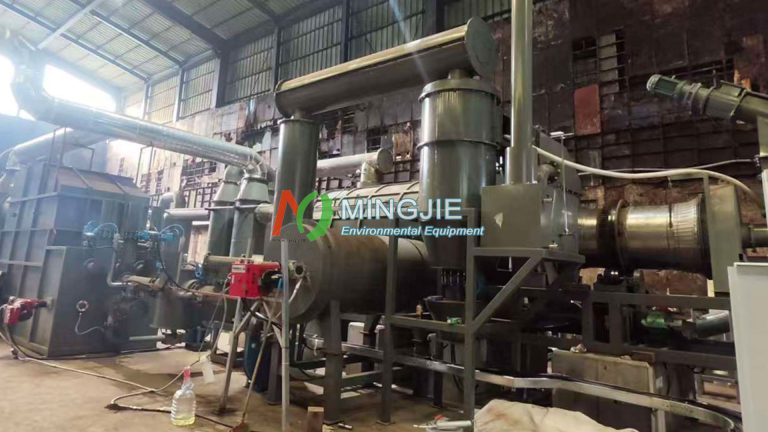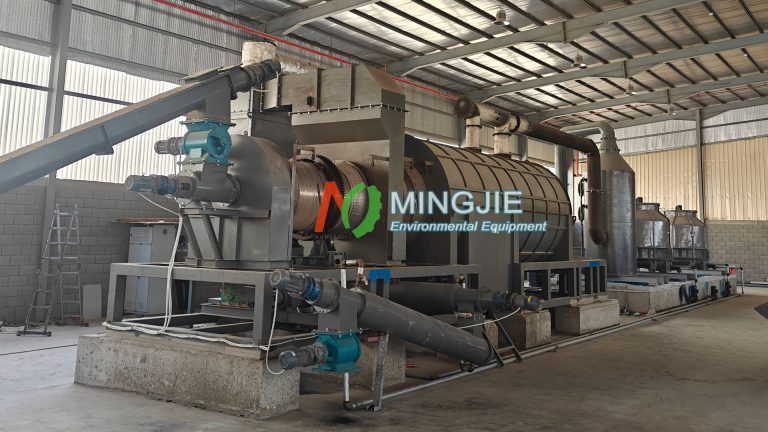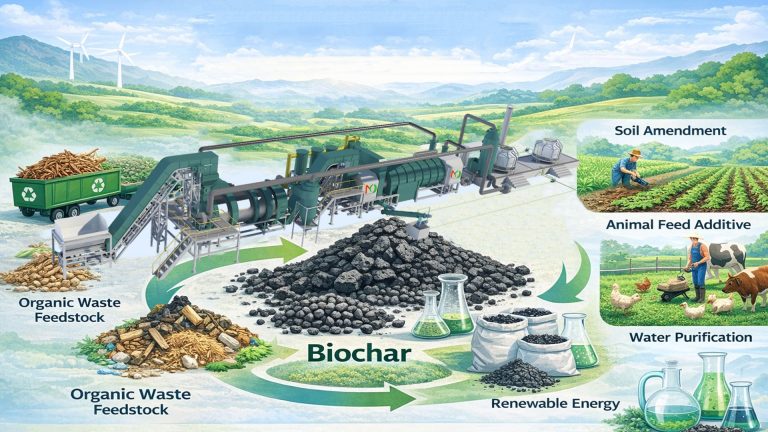Pyrolysis is an emerging sewage sludge disposal technology in recent years. It can convert sewage sludge into solid carbonized products (biochar), combustible gas and a small amount of liquid oil. Sewage sludge pyrolysis equipment can heat the sludge to a certain temperature in an oxygen-free or low-oxygen environment, causing a series of complex changes in the organic matter therein, such as decomposition, polymerization, condensation, etc.
The main product of sewage sludge pyrolysis carbonization is biochar. During the sewage sludge pyrolysis carbonization process, 93.94% of the C element is converted into aromatic carbon and fixed in the biochar, and 92.43% of the C element is in a stable state.
Sludge biochar can be used as a catalyst, adsorbent and soil conditioner. It has the characteristics of large specific surface area, rich surface oxygen functional groups, can fix heavy metals, and retain nutrients such as P and K.
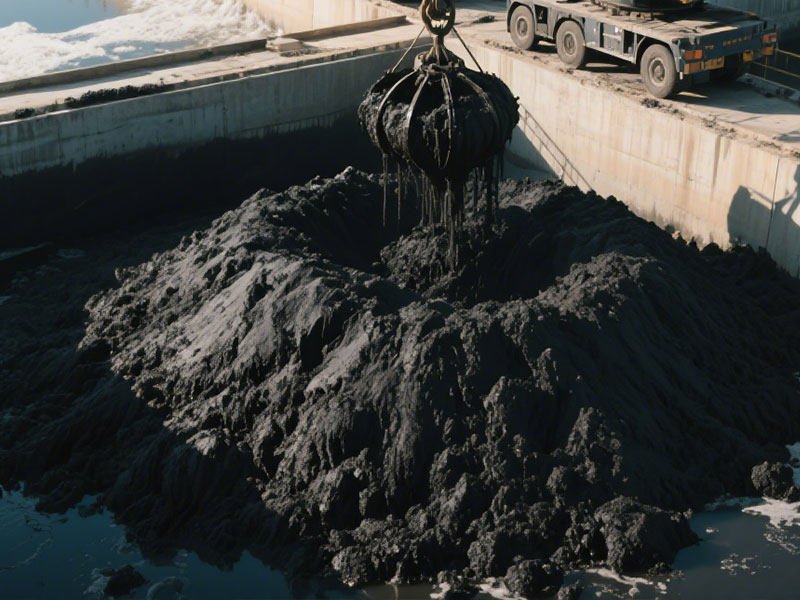
According to the accounting criteria provided by the Intergovernmental Panel on Climate Change (IPCC) of the United Nations, combined with the life cycle assessment (LCA), the carbon emission accounting of sludge treatment and disposal paths is carried out. It is found that compared with traditional sludge landfill and incineration processes, pyrolysis has less carbon emissions.
Pyrolysis carbonization technology can not only reduce pollutants in sludge and reduce sludge, but also achieve carbon fixation and emission reduction. It can also enhance its resource attributes, achieve carbon sinks, and promote resource and energy recovery in the sludge disposal industry.
Sewage Sludge Pyrolysis Process
The sewage sludge pyrolysis process can be divided into three stages: drying, pyrolysis carbonization and gas purification.
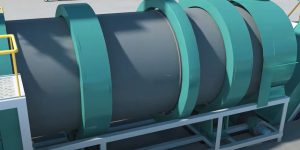
Drying Process
In the biomass pyrolysis project, the sludge moisture content before pyrolysis is preferably below 20%, which is convenient for subsequent continuous pyrolysis carbonization.
The main dehydration methods include mechanical dehydration (plate and frame filter press, centrifugal dehydration) and thermal dehydration (drying). In addition, the sludge can be crushed, screened, etc. as needed to remove large impurities and ensure the uniformity of the material.
Sludge Carbonization Process
The sludge carbonization stage is the core of the sewage sludge pyrolysis process. The pretreated sludge is sent to the pyrolysis carbonization reactor. In an oxygen-free or low-oxygen atmosphere, it is heated to the target temperature at a set heating rate.
The engineering application of sewage sludge pyrolysis is often low-temperature pyrolysis technology, with the temperature controlled at 450~500 ℃.
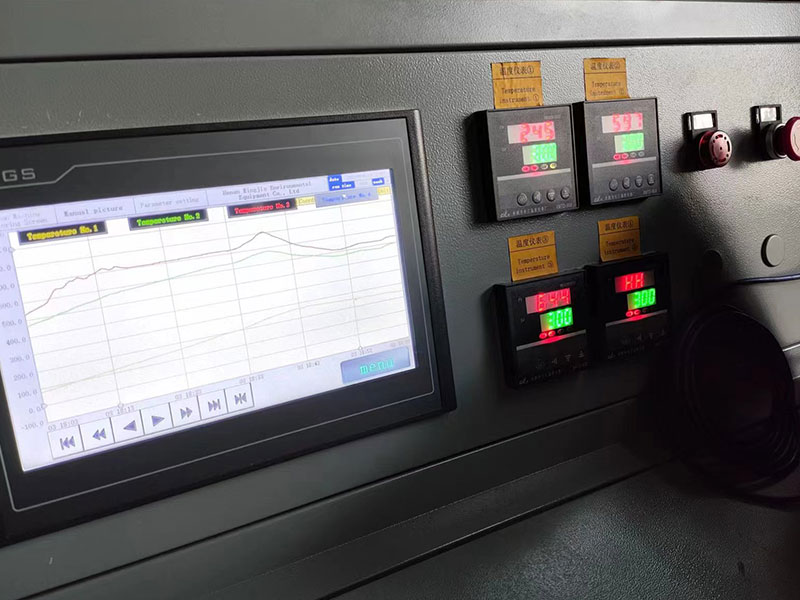
In different temperature ranges, the reaction will show different characteristics.
1) At low temperatures (<300 ℃), the sludge mainly evaporates water and slightly pyrolyzes easily degradable fatty compounds.
2) 300~500 ℃ is the main pyrolysis weight loss stage of sludge. The organic macromolecules undergo decarbonylation (—C=O—), decarboxylation (—COOH), dehydroxylation (—OH) and other reactions to generate small volatile products, mainly including gases such as H2, CO, CH4, CO2, and macromolecular tar substances such as long-chain hydrocarbons and benzene, as well as solid residues.
3) When the pyrolysis temperature is >500 ℃, the macromolecular tar components undergo further decomposition, and the yield of small molecule gases increases.
Pyrolysis Product Separation and Purification
The product separation and purification stage is to process the products produced by sewage sludge pyrolysis carbonization to improve their utilization value.
Biochar needs to be cooled, screened and other treatments to remove impurities and obtain products with higher purity.
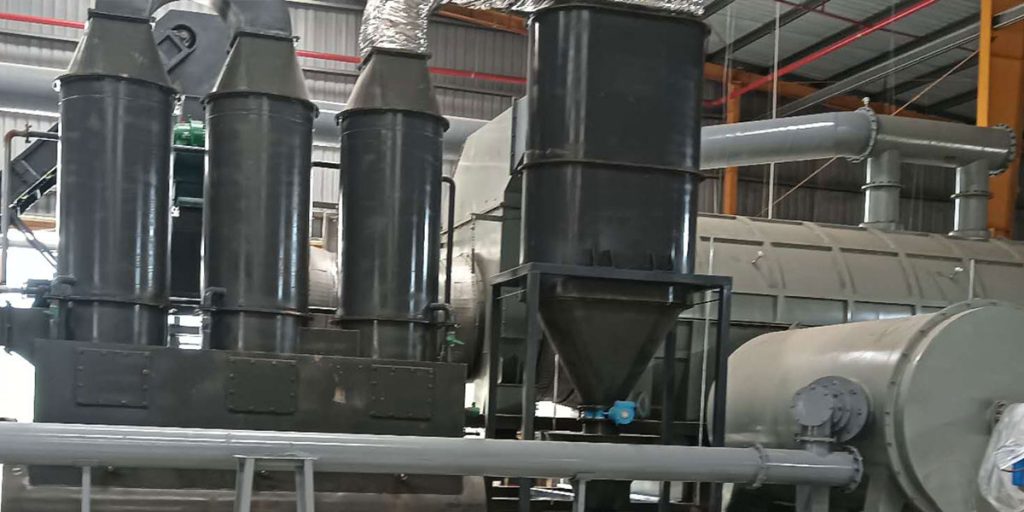
Pyrolysis gas contains combustible gases such as methane, hydrogen, carbon monoxide, and is also mixed with a small amount of tar and water. It needs to be processed by a purification device (dust collector, tar separator). The purified gas can be directly burned as fuel to provide energy for the pyrolysis carbonization process.
The output of liquid oil is relatively small, and its composition is complex. After treatment, it can be used as fuel oil.
Factors Affect Sludge Carbonization
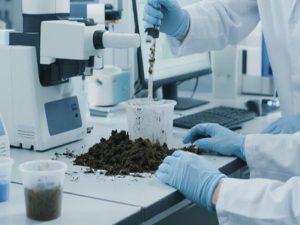
Material Size and Moisture Content
The particle size affects the sewage sludge pyrolysis carbonization process. Studies have shown that the smaller the sludge particles, the higher the solid residue produced.
The moisture content is also related to the distribution of sewage sludge pyrolysis products. Properly increasing the moisture content can also increase the pyrolysis synthesis gas yield, hydrogen production, and carbon conversion rate. To increase the biochar yield, it is best to keep the moisture content at a low level.
Pyrolysis Temperature
The pyrolysis temperature affects the entire sewage sludge pyrolysis process and has an impact on the physical and chemical properties, yield, and distribution of the pyrolysis products. It also affects the content and existence form of some pollutants in the products.
The pyrolysis temperature affects the combustion performance of sludge charcoal. The higher the temperature, the more complete the volatilization analysis in the sludge charcoal, the higher the ash content, and the worse the combustion performance of the sludge pyrolysis charcoal.
The pyrolysis temperature affects the polarity, porosity, and specific surface area of sludge charcoal. The sludge components are relatively complex, and the decomposition temperatures of different components are different. Therefore, at different pyrolysis temperatures, sludge charcoal may present different surface characteristics. To a certain extent, the increase in pyrolysis temperature is conducive to the development of pore structure.

The pyrolysis temperature affects the product distribution and the yield of sludge biochar. Due to the high temperature, the volatilization analysis in the sludge charcoal is complete. And biochar may undergo reduction reaction at high temperature to generate gas. Therefore, with the increase of temperature, the yield of pyrolysis charcoal gradually decreases, and the yield of pyrolysis gas gradually increases.
Pyrolysis temperature affects the content and state of substances in biochar. deSouza et al. found that as the pyrolysis temperature increased, the content of some volatile substances and elements in biochar decreased. The content of stable organic matter such as aromatic compounds and ash increased, and the concentration of toxic elements such as lead and cadmium increased. However, heavy metals are converted from convertible states to more stable forms.
Residence Time
The length of residence time affects the distribution and yield of pyrolysis products, and also affects the concentration of toxic and harmful substances in pyrolysis carbon.
Within a certain range, as the residence time increases, the volatile matter in the sludge gradually precipitates, the biochar yield decreases, and the oil yield increases. When the residence time is further increased, the yield of the product oil decreases due to secondary cracking. When the residence time is shortened and a faster heating rate is used, the secondary cracking of the oil is reduced, and the distribution of the product shifts to the oil phase.
As the residence time increases, the fixed carbon content in the biochar increases. Studies have shown that at the same temperature, the longer the sludge residence time, the greater the concentration of phenanthrene (Phe) and anthracene (An) in the product charcoal and the faster the generation rate. The concentration of total polycyclic aromatic hydrocarbons in the solid phase product decreases with the increase of residence time, while the concentration of total polycyclic aromatic hydrocarbons in the liquid phase product increases.
Heating Rate
The heating rate has an important influence on the distribution and characteristics of pyrolysis products.
When the heating rate is high, the oil and gas content of the sewage sludge pyrolysis products is relatively large. This is because the sludge stays in the high temperature section for a long time, which is conducive to the better conversion of organic matter into pyrolysis oil. When the heating rate is low, the time spent in the low temperature section is long, which is not conducive to the occurrence of this conversion.
Summary
Sewage sludge pyrolysis carbonization technology is an advanced sludge treatment and resource utilization technology. It is of great significance in solving sludge pollution problems and realizing resource recycling.
Mingjie continuous pyrolysis plant can realize large-scale pyrolysis of sludge. The biomass carbonization plant can convert sewage sludge into biochar. And the oil sludge pyrolysis plant can convert oily sludge into fuel oil. To learn more about our solid waste pyrolysis plant, please contact engineering@mingjiegroup.com.

